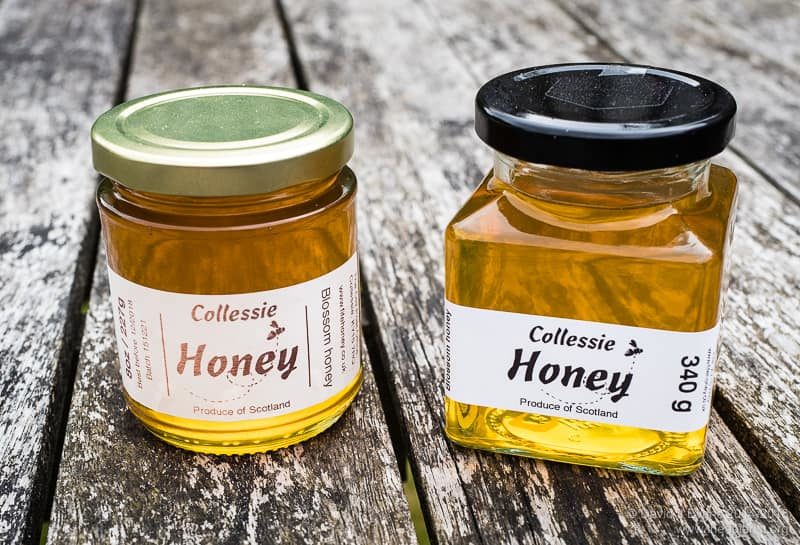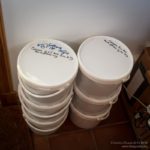Faded glory
Honey has a long shelf life if prepared and stored properly. By long shelf life I don’t mean weeks or months. I mean years. And lots of them. Ceramic pots of honey have been found in Egyptian pyramids which are apparently still edible, though it’s notable that there’s never any direct quotation on what the flavour is like. Honey has also been discovered in Georgia that date back about 5,500 years, though again there’s no comment on the flavour. At the time of writing (autumn 2016) my honey carries a ‘best before’ date of December 2018 which I reckon is reasonably safe. From January next this will be December 2019.
Whether those ancient honeys tasted good or bad, there can be relatively few foodstuffs that remain even identifiable over hundreds, let along thousands, of years. This longevity is due to a combination of the low water content and high acidity of honey, which makes it an extreme environment for the micro-organisms that usually spoil food. In addition to this, enzymes added during nectar processing by the bees increase the hydrogen peroxide content. Hydrogen peroxide (H2O2) is also anti-microbial, and is one of there reasons that honey can be used for wound dressings. Notwithstanding all of this natural protection, honey deserves being properly looked after to ensure it can be enjoyed at its best.
Long term storage
I store extracted honey in food-grade 30lb buckets with airtight lids in a cool environment (an unheated entrance hall with a flagstoned floor). I measure the water content using a refractometer when I extract and write this on the lid of the bucket, generally using the honey with the highest water content first (though this also depends upon demand for particular honey types). The apiary and date of extraction are also recorded.
I bottle in batches, one or two buckets at a time. This is a convenient amount in terms of sales, space in the warming cabinet and minimising problems with frosting. It’s also just about my limit for repetitive manual work and restricts the amount of heavy jarred honey that needs to be stored. Finally, labelling 60 or more jars is also a pretty tedious experience, though I do like the appearance of serried rows of identically labelled jars ready to go off to the shop.
Faded glory
Jarred honey needs to be stored somewhere cool and out of direct sunlight. I use the same cool entrance hallway I use for buckets of honey. The out of direct sunlight instruction is really to avoid subjecting the honey to fluctuating temperatures. Inevitably, one or two jars are kept on the shelf to attract sales or as gifts for visitors.
I recently noticed that the thermal printed labels (Dymo) I use fade quite badly when exposed to sunlight. The ½lb round at the top of this page has been on my office shelf since January, exposed to full sun (or as much full sun as we get in Fife). Next to it is a ¾lb square† that has been recently labelled. The fading of the label on the left is very obvious. Therefore, if you use thermal printers to prepare simple DIY labels this is an additional reason to keep your jarred honey in dark, cool conditions … or give it away/sell it faster 😉
† These jars are from C. Wynne Jones, as are the clear anti-tamper labels which are a big improvement on the fiddly thin Dymo transparent tape I was previously using.


Join the discussion ...